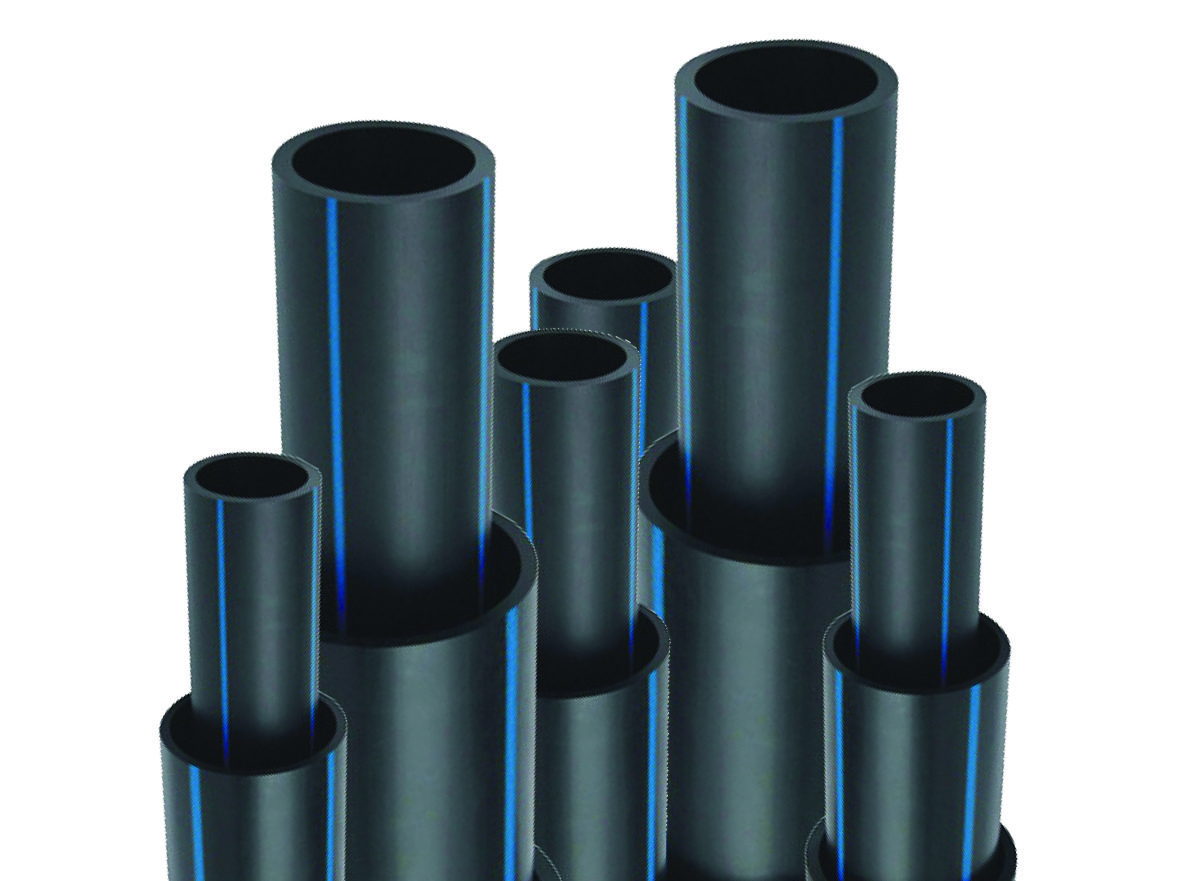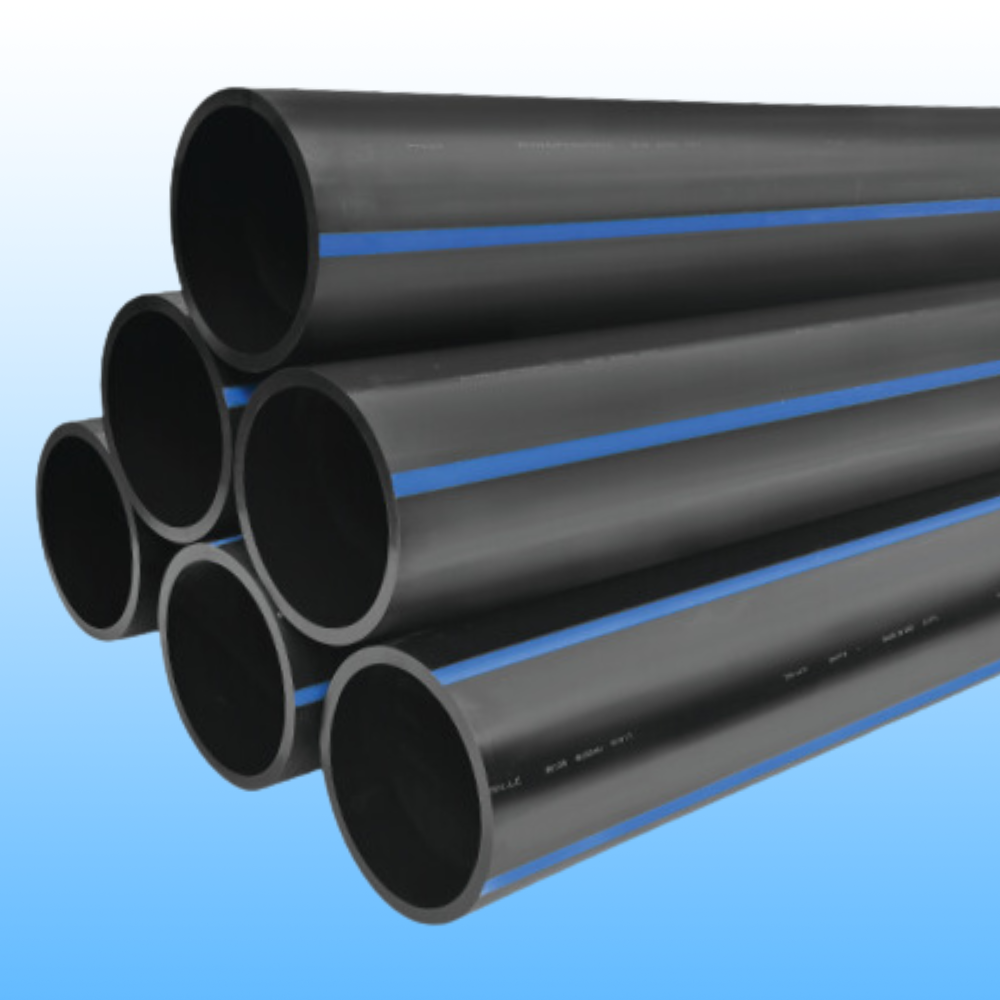hdpe pipe suppliers Midland TX: Checklist for Contractors
Wiki Article
Explore the Manufacturing Refine Behind High-Quality HDPE Pipe and Its Applications
The manufacturing procedure of top quality HDPE pipelines is detailed and methodical. It starts with the option of resources that boost efficiency. Following this, ethylene goes through polymerization to form resin, which is after that shaped with extrusion. Quality assurance is critical, making certain that the last item satisfies stringent requirements. The journey of HDPE pipes does not end with production. Their applications throughout numerous sectors expose a broader value worth examining.Understanding HDPE: Qualities and Advantages

High-density polyethylene (HDPE) is a versatile thermoplastic known for its toughness and resistance to various environmental factors. This material displays excellent tensile toughness, making it ideal for demanding applications. Its low-density structure adds to a light-weight item, facilitating simplicity of taking care of and installation. HDPE also showcases impressive resistance to chemicals, which decreases deterioration when exposed to extreme materials.
The product's reduced moisture absorption even more enhances its durability, making it suitable for usage in pipes and storage space containers. In addition, HDPE is resistant to ultraviolet (UV) radiation, guaranteeing that products keep their integrity even when subjected to sunlight. Furthermore, its flexibility enables the development of complex shapes without endangering toughness. The environment-friendly nature of HDPE, frequently originated from recycled materials, includes in its charm, advertising sustainable practices in production. On the whole, these residential properties and advantages make HDPE a recommended option for different commercial and consumer applications.
Raw Material Option for HDPE Manufacturing
The selection of resources for HDPE manufacturing is necessary to verify the end product fulfills the preferred specs and high quality standards. High-density polyethylene (HDPE) is primarily generated from polymerized ethylene, stemmed from fossil fuels such as natural gas or petroleum. The high quality of these feedstocks greatly affects the mechanical and thermal homes of the last HDPE.Ingredients likewise play a substantial role in improving HDPE's performance, including anti-oxidants, UV stabilizers, and colorants, which improve sturdiness and resistance to ecological factors. The option process must consider not only the chemical make-up of the raw materials however also their processing features to guarantee reliable manufacturing.
Moreover, the sourcing of resources ought to prioritize sustainability and conformity with ecological regulations, as liable practices are crucial in today's market. Eventually, cautious basic material option lays the structure for producing top quality HDPE pipelines ideal for varied applications.
The Extrusion Refine: Shaping HDPE Pipe
The extrusion process plays a vital function fit HDPE pipes, beginning with meticulous material preparation techniques that assure excellent flow and uniformity. Equally important is the layout of the die, which directly affects the last dimensions and surface top quality of the pipeline. With each other, these elements add greatly to the performance and top quality of HDPE pipeline production.Product Preparation Strategies
Reliable manufacturing of HDPE pipes begins with precise material preparation methods, particularly the extrusion process. Throughout this stage, high-density polyethylene resin is first dried out to get rid of wetness, guaranteeing suitable flow attributes. The material is then fed right into the extruder, where it goes through heating and melting, changing right into a thick state. This heating process is very carefully controlled to keep the material's stability and efficiency. The liquified HDPE is compelled with a die, shaping it right into a constant pipeline type. Proper temperature level administration throughout extrusion is important, as it directly influences the product's buildings and the end product top quality. As soon as formed, the HDPE pipe is cooled and reduced to defined lengths, all set for subsequent handling and applications.Die Style Relevance
Precision in die design plays a necessary duty in the extrusion procedure of HDPE pipelines. The die serves as the last shaping tool, directly affecting the pipe's dimensions, wall surface thickness, and surface area coating. A well-designed die guarantees uniform product circulation, lowering defects such as irregularities and vulnerable points. The geometry of the die have to be optimized to accommodate the details properties of HDPE, including its thickness and thermal actions throughout extrusion. Additionally, the cooling price of the material as it passes via the die can markedly impact the pipeline's architectural stability. As a result, buying sophisticated die modern technology is vital for manufacturers aiming to create top quality HDPE pipelines that meet industry requirements and customer assumptions.Top Quality Control Steps in HDPE Manufacturing
Although various variables affect the top quality of HDPE pipe manufacturing, efficient top quality control steps are vital to ensure uniformity and integrity in the last item. Trick high quality control methods include rigorous material assessment, confirming that the raw polyethylene fulfills established criteria for purity and thickness. Throughout the extrusion process, specifications such as temperature, stress, and cooling time are carefully monitored to preserve dimensional accuracy and architectural stabilityOn top of that, post-production testing is vital; suppliers usually conduct hydrostatic examinations to examine the pipeline's toughness and resistance to stress. Aesthetic inspections for surface area flaws additionally improve high quality guarantee. Accreditation from pertinent criteria organizations, like ASTM or ISO, gives an extra layer of credibility. By applying these extensive quality assurance steps, manufacturers can lessen defects, improve efficiency, and make certain that the HDPE pipes fulfill the certain needs of different applications, ultimately bring about client satisfaction and count on the item.
Applications of HDPE Pipeline Throughout Industries
HDPE pipes are used across various sectors as a result of their toughness and adaptability. In water distribution systems, they assure reliable shipment, while in wastewater administration, they supply reliable services for waste transportation. In addition, farming irrigation networks gain from HDPE's resistance to deterioration and versatility, making it an excellent selection for modern farming practices.
Water Distribution Solutions
A substantial number of sectors count on high-density polyethylene (HDPE) pipelines for effective water distribution systems. Recognized for their durability and resistance to corrosion, HDPE pipelines are widely made use of in metropolitan water networks, agricultural watering, and commercial applications. Their light-weight nature facilitates very easy handling and installment, lowering labor expenses and time. Additionally, HDPE pipelines can suit different stress levels, making them suitable for both reduced and high-pressure systems. Texas hdpe pipe manufacturer. The versatility of the product enables seamless assimilation right into existing infrastructure, lessening the demand for substantial excavation. In addition, HDPE's resistance to chemical seeping assurances that the water supplied stays risk-free and tidy, making it an excellent selection for maintaining the top quality of safe and clean water throughout different marketsWastewater Monitoring Solutions
Effective water distribution systems additionally lead the way for innovative wastewater administration options, where high-density polyethylene (HDPE) pipelines play a considerable duty. Renowned for their longevity and resistance to corrosion, HDPE pipelines are optimal for moving wastewater in various settings. Their flexibility permits easy setup in complicated atmospheres, lessening the requirement for comprehensive excavation. Furthermore, HDPE's smooth interior surface reduces friction, boosting flow prices and efficiency. These pipes are also resistant to chemical leaching, making sure that impurities do not endanger the surrounding environment. Industries, districts, and treatment facilities increasingly depend on HDPE pipelines for their dependability and longevity, making them a favored option for contemporary wastewater management systems. This versatility underscores the essential importance of HDPE pipelines throughout various applications.Agricultural Watering Networks
Agricultural watering networks profit substantially from using high-density polyethylene (HDPE) pipes, which provide effective and reputable water distribution to crops. HDPE pipelines are light-weight, making them very easy to transport and mount, while their adaptability enables various configurations in diverse surfaces. These pipes show superb resistance to deterioration, chemicals, and UV radiation, ensuring toughness in severe agricultural atmospheres. In addition, their smooth indoor surface reduces friction loss, optimizing water circulation and decreasing power prices related to pumping. The durability of HDPE pipelines, typically surpassing 50 years, adds to decrease upkeep and substitute expenses. Subsequently, farmers increasingly depend on HDPE pipes to boost watering efficiency and advertise lasting farming practices, eventually resulting in boosted plant returns and resource preservation.Future Trends in HDPE Pipe Technology
As the need for lasting and reliable facilities expands, innovations in HDPE pipeline innovation are positioned to change various sectors. Arising trends include the assimilation of smart modern technologies, such as sensing units and IoT capabilities, which promote real-time tracking of pipeline conditions, lowering upkeep expenses and avoiding leakages. Additionally, the advancement of sophisticated manufacturing methods, such as 3D printing, is enabling the manufacturing of facility, customized pipeline layouts that provide to details task needs.The focus on recycling and round economic situation techniques is driving the innovation of HDPE pipelines made from recycled materials, boosting sustainability. Improved jointing methods, such as electro-fusion and mechanical fittings, are additionally boosting installment effectiveness and reliability. Ultimately, the growing emphasis on environmental regulations is pressing makers to adopt greener production procedures, guaranteeing that HDPE pipelines not only satisfy industry requirements however likewise foster an even more sustainable future for facilities advancement.
Often Asked Inquiries
How Does HDPE Compare to Other Plastic Products?
HDPE exceeds lots of other plastic products pertaining to toughness, chemical resistance, and flexibility. Its reduced density and high tensile toughness make it perfect for various applications, often surpassing choices in both slip coupling performance and longevity.What Are the Environmental Influences of HDPE Production?
The environmental effects of HDPE production include greenhouse gas discharges, energy usage, and possible air pollution from producing procedures. In addition, inappropriate disposal can cause dirt and water contamination, elevating problems about long-term ecological results.Can HDPE Water Lines Be Recycled?
Yes, HDPE pipelines can be recycled. Many centers accept made use of HDPE for processing, transforming it right into brand-new items. This recycling adds to sustainability initiatives, lowering plastic waste while preserving resources and power in the manufacturing cycle.What Is the Life-span of HDPE Pipeline?

Just How Do Temperature Variants Impact HDPE Pipe Efficiency?
Temperature level variations considerably influence HDPE pipeline efficiency, affecting versatility and strength. High temperatures can cause softening, while low temperatures may trigger brittleness, eventually affecting the pipeline's durability and suitability for different applications in varied settings.Report this wiki page